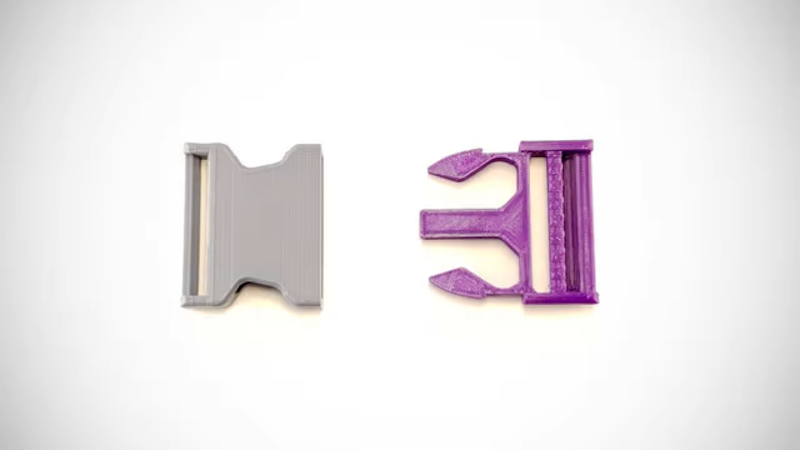Owning a 3D printer seems to progress through stages. You start printing simple shapes. Then you get serious about calibration and quality. Eventually, you move to trying to design and build practical things. To get practical, you often need to join parts together and that requires glue, fasteners, threaded inserts, and plastic welding. However, you can also make parts that fit together using friction and the springiness of plastic. For example, [Lucas Carolo] recently had a look at 3D printing snap-fit joints. These are commonly seen on the end of straps so that you can connect two ends together.
Of course, you can use them anywhere you need a secure connection. However, you might want to consider that since the jaws compress, there will be repeated stress on the part, so it might not be a good choice for items that you will frequently snap together. Also, brittle plastic such as PLA might not be the best choice of materials. There are several different kinds of joints. The cantilever version has a hook that bends into place and, as mentioned earlier, is common on luggage or backpack straps. The post offers tips on how to design a durable hook. In particular, the orientation of the hook during printing is critical because of the stress involved.
Another type of snap-fit joint is the kind you find on many snap electronic enclosures or things like pen caps. In these joints, a large bump (a boss) fits into a similar groove on the other part. The post has a little less information on these but does mention that you should form the bosses with a chamfer. If you want more details, the post links to a great guide and an enclosure tutorial that you should check out.
We’ve covered this topic before and have some other guides to check out. We’ve also seen some pretty innovative connecting methods.
















“mention that should form”?
how many cycles? 5? 10?
I dunno if it’s the cycles or the strain failure that will get them first. That’s what seems to kill the injection molded ones. The nice thing I guess is that you can print plenty of spares and just swap them in when they fail…. but you only want to be using them where failure is annoying rather than deadly, injurious or expensive.
I think all 3 of those cases probably leaves out 3d printing to start with.
I’ve got a 3d printed belt buckle on my tool belt with a very nice design – really wide, quite thick and long spring section so the spring force and latching action is good but the deflection is almost nil, and its going strong many more cycles than the injection molded one it replaced…
Cycles are not easy to estimate with a 3d print, as material and layer bonding are so varied, but the same rules that apply to any flex mechanism will get you a good lifespan, and the big one there is never ever bend near the elastic limit. So a little testing is in order if such things really matter for your usecase.
Depends entirely on the material.
So often it is impossible to get a good part orientation with hook snap fits, that isn’t on the Z axis.
I’ve had a more success though, with “annular” snap fits. Like a Tupperware lid. That seems to often work better joining two enclosure halves together, the strain is on stretching the plastic on the X and Y axis, rather than pulling the Z layers apart.
I wouldn’t say that PLA is particularly brittle. My experience is that it just flexes easier and does not return to its original shape completely. Over time it will always deform. Also, very little heat is needed to make the deformation permanent. Long exposure to 60 degrees celcius might easily make some PLA part droop.
PLA is brittle compared to most other plastics, like ABS or PETG. It’s stiffer/more rigid, but more brittle. Maybe you’re thinking of PLA+, which are reformulated PLA that is less brittle but also less rigid.m, making it more like ABS.
I’ve had pretty good luck with this one, even with PLA. I made a belt for my ski pants, and have used it for several years. I think the reason it works so well is that the flex is spread out along a pretty long “beam” of plastic. https://www.thingiverse.com/thing:2814683